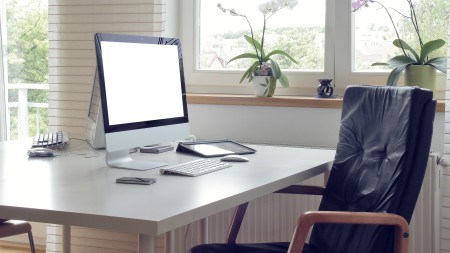Follow these 4 tips to create a space that you’ll want to get down to work in.
Kids, pets, partners and parents, TV, surround sound and other technology; a home environment is often a hugely challenging one to work in. Yet, whether it’s a work from home situation, household management or a homework zone, a home office is necessary in many homes.
Here are four ways to create a work space that’ll help you get the job done.
Quiet place
Choose the most isolated spot possible for your office, in other words, as far away as possible from the home’s social areas. Not only will the lack of contact help you focus better and get the work done more efficiently, but it will encourage you to do it quickly, in order to get back into the midst of things. Don’t be fooled by thoughts that you can watch TV, chat and work at the same time, when your mind isn’t diverted by other distractions your capacity to concentrate is far superior.
Close the door
If at all possible, choose a spot that has a door or where walls and a door can be built. If traditional walls and door are out of the question, try something modern such as sliding doors or even roller blinds. Besides reducing sound distractions, a closed door also signifies that work is in progress and this needs to be respected. We don’t expect children or colleagues to burst loudly into an office, or enter without knocking, especially when someone could be speaking to a client, and the same should apply to a home office. A closed door signifies business.
Open the windows
While fresh air, natural lighting and a good dose of sunlight are first prize, not just for work efficiency but for psychological wellbeing too, home office spaces often need a little help. Blue light is good for alertness – and cool light bulbs generally give this. (Don’t buy blue novelty bulbs that give everything a blue look.) As far as sunlight goes, sometimes we have too much. If your office is treated to a pool of sunlight that prevents you from working, consider installing blinds that will shift the sun from your eyes and cool the area. You may need to install appropriate heating and cooling devices too.
Keep it calm
Help prevent cognitive overload in a workspace by reducing the visual complexity where possible. In other words, while you probably don’t want to work in an entirely blank space, it’s best not to have too much going on visually. Address this by decorating and furnishing most of the office space in a uniform colour – white or black are popular choices – and by keeping the space as clutter-free as possible. Go paperless where you can’t and where you can’t use shelving, drawers, cupboards or cabinets to store filing and equipment away. Research has shown that most people tend to think more creatively in spaces with high ceilings, so if you can choose a spot with high ceilings do so too.




